A walk around the Shaws
Pollokshaws is located in the South of Glasgow, about three miles from the city centre. It has a long history as a vibrant independent burgh which all changed in the 60s with the area being extensively redeveloped. In this post, you will find some history about the area listing stops for a self-guided tour. So get your walking boots on and follow the Pollokshaws Trail.
Location and Trail Map
History
The name Pollokshaws possibly comes from the following, (but really its anyone’s guess!) Pollok could be from the Gaelic ‘Pollag’ and Scots word ‘Powk’ which means ‘pool’ (the White Cart flows through Pollokshaws and the land is quite low beside the river). The word ‘Shaw’ is believed to mean ‘woodland’. This would also follow for Shawhill, Woodland Hill, as it was at one point. Pollokshaws is first mentioned as Pook Shawes on a Timothy Pont map published by Blaeu in 1654.

Pollokshaws was a Burgh of Barony from 1813 to 1858. A burgh of barony was granted to a landowner who held his estates directly from the crown, in the case of Pollokshaws this was Maxwell of Pollok. In 1858 Pollokshaws became a Police Burgh utilizing the Police Burgh (Scotland) Act 1833. Police burghs were towns which adopted Acts of Parliament to adopt an elected town council responsible for policing, paving, lighting and cleansing. Pollokshaws Burgh Hall was constructed in 1898, using £20,000 gifted by Sir John Stirling Maxwell. He also contributed to its upkeep until the annexation of Pollokshaws to the city of Glasgow.
In “Rambles Around Glasgow”, Hugh MacDonald mentions the area. Travelling from Crossmyloof on the road to Kilmarnock through Barrhead (nowadays Pollokshaws Road).
“On either hand are wide-spreading and fertile fields, relieved at intervals with patches and belts of planting, farm-houses, and gentlemen’s seats. About half the distance it is up hill, but afterwards it gradually declines towards the hollow in which, on the banks of the Cart, here a considerable stream, the town is situated.”
This describes the area from roughly where the Granary Pub is situated at Shawlands Cross, following Pollokshaws Road to Auldhouse Toll.
The industry of Pollokshaws, during this period, was primarily weaving, dyeing and spinning. Clothing manufacture continued in Pollokshaws until 1994 when Claremont Garments, previously D & H Cohen closed.
In 1912, Pollokshaws was annexed to Glasgow. The land area at this time was 67 hectares with a population of 13,000. The area of Pollokshaws contained mostly low residential density and had a village-like atmosphere.
The character of the area of Pollokshaws and Shawhill changed in the 1960s. This was due to Pollokshaws being marked as the second Comprehensive Development Area (CDA) in Glasgow. The first area being Gorbals.
Pollokshaws Trail
Pollokshaws West Railway Station

The railway station here was opened as Pollokshaws on 27th September 1848 as part of the Glasgow, Barrhead and Neilston District Railway. The station was re-named as Pollokshaws West in May 1952, with the building now protected as a category B-listed building.




Remains of Pollokshaws United Presbyterian Church
All that is left of the Church here are the stone pillars which mark the entrance to the new housing. The church was built in 1846 and the congregation left the site in 1976. The building was demolished after being vandalised and the land became sheltered housing. You can still see the pillars, moved slightly.




Pollok Academy
Situated on Pollokshaws Road, opposite Pollokshaws West Railway Station, Pollok Academy was demolished in 1968 during the redevelopment of the area. Its most famous former pupil was John Maclean.

Afton Terrace
One of the few tenements that still exist in Pollokshaws and amazingly left untouched by the road widening. Just after Afton Terrace, is the original site of Pollokshaws Bowling Club. The bowling club moved across the road in 1954 to its present setting beside Pollokshaws West Railway Station.


Pollokshaws Methodist Church
The congregation here formed in 1880 and opened a purpose-built Church in 1883 on Cross Street. This was demolished in the 1960s due to the road widening and the present building was built in 1967.



Toll House
The Tollhouse was built around 1750 when tolls to assist road-building were introduced
This shows the toll-house from the south-west. Though boarded up in this view, it had been inhabited until only a short time earlier. In the background are two of the then-new tower blocks built in the earlier 1960s to replace the old village of Pollokshaws.
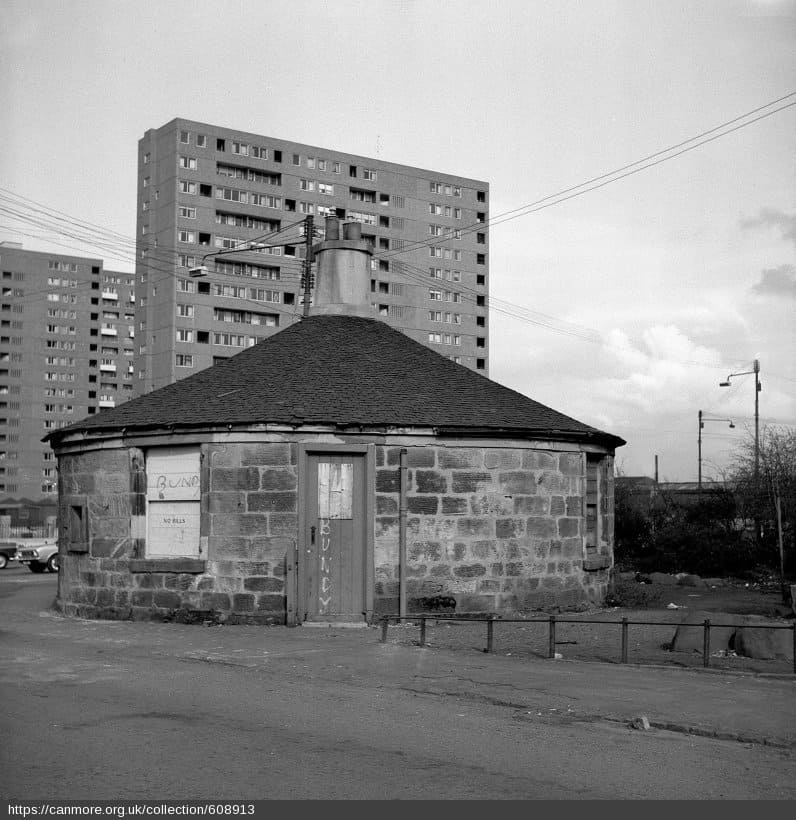
The image below is from 1979.
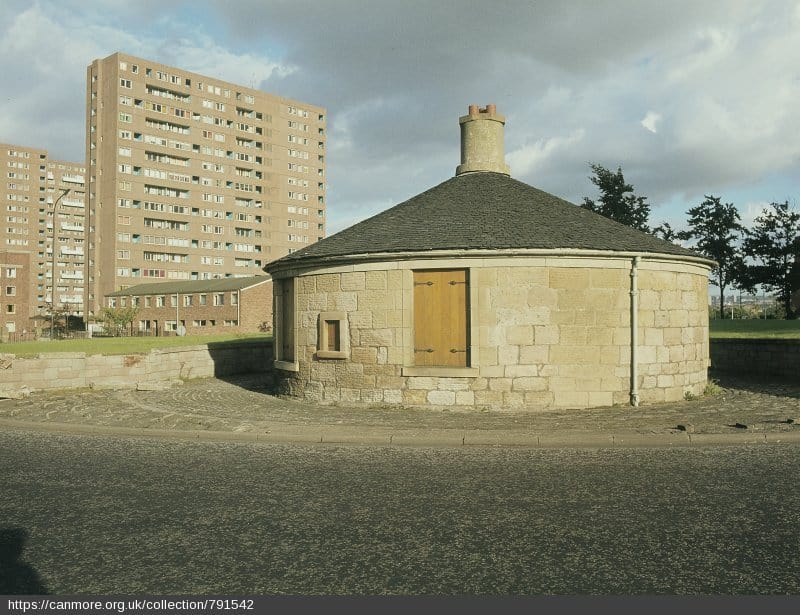

There is a small plaque on the wall of the Methodist Church about the Toll House.
Pollokshaws Police Station
Closed in 2014 and no idea of what plans are afoot for this area.

Pollokshaws Parish Church

This B-listed church has been in existence since 1843 and is the last Original Secession Church building still in use within the Church of Scotland.
Pollokshaws United Free Church

The church closed in 1994 and the building is now in use as a children’s play centre.
The Shilling Ground


A triangular area of ground known as ‘The Shilling Ground’. This piece of ground is where local farmers would toss their grain into the air for the breeze to blow away the chaff allowing the heavier grain to fall to the ground.
The five trees planted here are reputed to commemorate the last five Provosts of Pollokshaws which was an independent burgh before being annexed by Glasgow in 1912.
The Meal Mill and Millers House

Tenants who worked the Pollok Estate went to the Shaw Mill to have their grain ground. The building is now Pollokshaws Orange Lodge, which relocated here from Pollokshaws Road in 1966. (If anyone knows where it was, please let us know).
The Weir
The weir has been here since the 1790s.

The Vennel/Kirk Lane Cemetery



In 1739, a group called the Praying Society in the Parish of Eastwood joined the Associate Presbytery and established the first secessionist congregation in Glasgow. In 1763, this group settled in Pollokshaws, built a church and a graveyard was laid out around the church. The congregation remained at Kirk Lane until 1871 when they moved into a new church in Leckie Street. This graveyard is the final resting place of Robert Burns’ daughter Betty and her family. The name vennel is an old word for a passageway between two buildings.
The Salvation Army Hall

The Salvation Army Hall was built in 1909 and closed in 2000. It is now a private nursery. If you look closely on either side of the main entrance are three foundation stones.
Sir John Maxwell Primary School

A school has stood here since 1873 and was in operation until 2011 and has been left to rot since. Click here for some internal shots from an excellent urbexer – proj3ctm4yh3m.
The Baths and Steamie




Pollokshaws Burgh Council commissioned a fire station, baths and houses for the corner of Factory Street (Now Riverford Road) and McDougall Street. If you look in between the corner and the newer tenement in McDougall Street there is a low building which was the first Pollokshaws baths was for personal washing, not swimming. The swimming baths and warehouses were constructed in 1924 and demolished in 2010 (I think!)
Pollokshaws Library
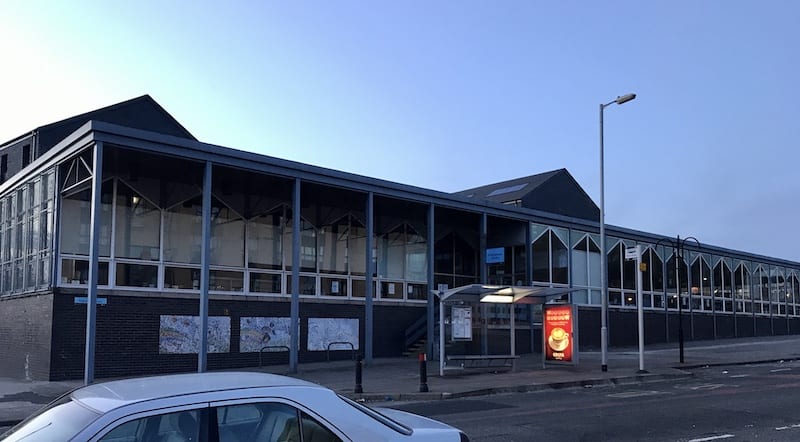

Pollokshaws library has been at this site since 1968.
Pollokshaws Shopping Precinct
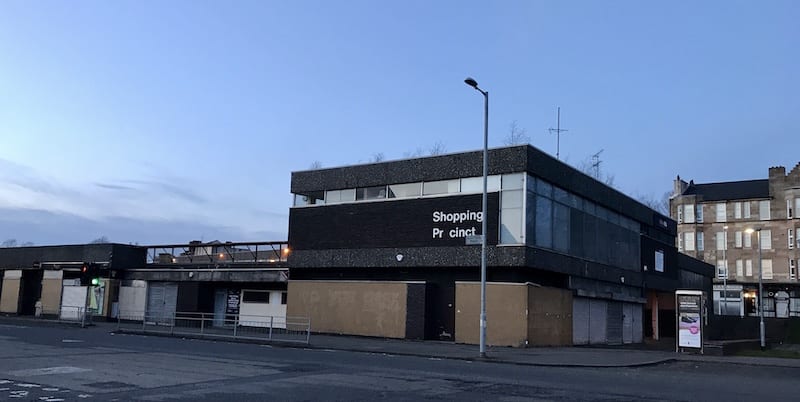
[soliloquy id=”69894″]
Looking at it today, you wouldn’t believe that this development cost £1.25m to build. Like other similar shopping centres of this time, it failed and is now almost completely uninhabited.
The Toonhouse

The clock tower is all that remains of the townhouse. The building was partially demolished in 1895 when the new Pollokshaws Burgh Hall was built.
Located in the square where the old toonhouse was are sculptures celebrating John McLean.
John MacLean was a teacher of Marxist economics and industrial history at various locations throughout Glasgow.
John MacLean was vigorously opposed to the First World War and he was arrested for the first time in October under the Defence of the Realm Act (1915). He was found guilty of speeches that would prejudice army recruitment and was fined £5 but his refusal to pay earned him 5 days in jail and dismissal from his teaching post. He was arrested again in 1916 and imprisoned for 3 years but was released in 1917. Due to his support for the Russian Revolution, he was appointed Consul for Soviet Affairs in Great Britain and he set up a Consulate Office at 12 Portland Street, Glasgow. In 1918 the authorities raided his office and arrested him and charged him with sedition. He was sentenced to 5 years in Peterhead Prison. John Maclean died from pneumonia, aged 44, at his home at 42 Auldhouse Road on the 30th November 1923.
A granite commemorative cairn was unveiled by MacLean’s daughters which is inscribed.
FAMOUS PIONEER OF WORKING CLASS EDUCATION. HE FORGED THE SCOTTISH LINK IN THE GOLDEN CHAIN OF WORLD SOCIALISM.
The Stag Building
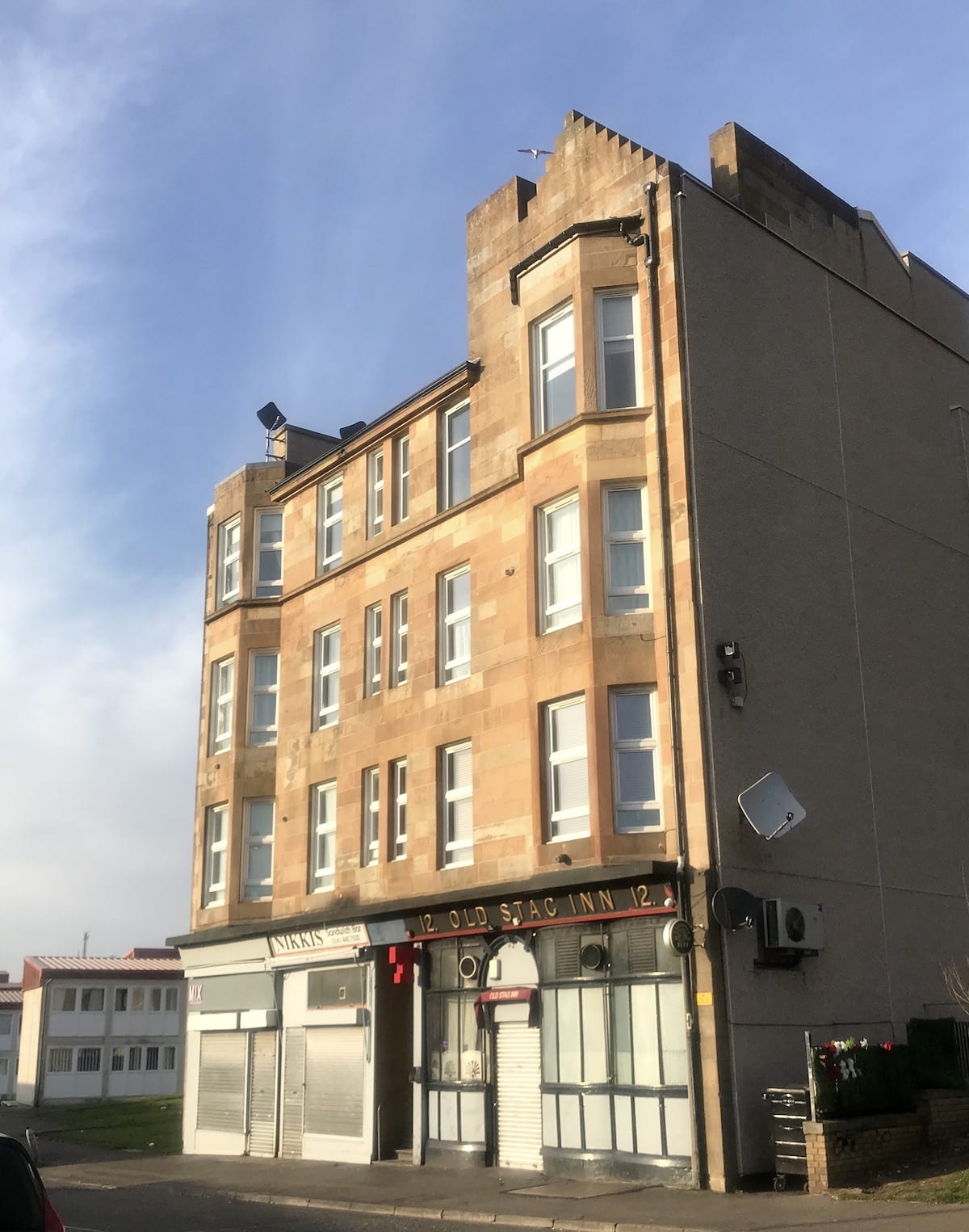
One of the few tenement buildings remaining in Pollokshaws.
D&H Cohen/Cohens/Claremont Garments
The sprawling complex that was Cohens, D&H Cohen was renamed Claremont Garments. Claremont Garments closed in 1996 with the site developed by the Department for Work and Pensions to build Newlands Job Centre (old one was in Shawlands Arcade) and housing. I just remember the huge factory and no more, it dominated the road. Unfortunately, I don’t know anything else about Cohens.
The area outlined, badly, in black shows the size of the complex.


St Conval’s School
St Convals School has been here since 1906 on land leased from Sir John Stirling Maxwell.
St Mary Immaculate

Formed in 1849, the Parish of St. Mary Immaculate was formed and in 1864 when the Chapel of St Mary Immaculate was constructed on land gifted to the church by Sir John Maxwell. The foundation stone was laid on 18th June 1864 and the Church was officially opened on 9th September 1865. The presbytery was added in 1879 whilst the north aisle was extended in 1900.

The Bank Building

Another one of the few remaining tenement buildings from the ’60s development. This used to be known as Pollok Street and was constructed for the Commercial Bank of Scotland. The building has been converted to residential accommodation.
Plant a tree in ’73

Plant A Tree In ’73 was a Government-sponsored campaign to encourage the planting of trees as Dutch Elm disease was sweeping the country. Trees were planted by the pupils of St. Conval’s and Sir John Maxwell Schools. One of the trees, planted by Prince and Princess Richard of Gloucester.
Pollokshaws Burgh Hall

The A-Listed Pollokshaws Burgh Hall was commissioned by Sir John Stirling Maxwell at a cost of £20,000. The building was gifted to the Burgh of Pollokshaws for inhabitants to use.






LOOKING THRUGH A THE PICTURES BROUGHT BACK SO MANY MEMORIES OF GROWING UP IN POLLOKSHAWS. GOING TO THE STEAMY WITH MY MOTHER. LEARMING TO SWIM AT THE BATHS. GOING TO THE LIBRARY WITH MY MOTHER. I STARTED SCHOOL THERE AND LEFT SCOTLAND WHEN I WAS FIFTEEN I GREW UP IN AFTON TERRACE, SO GLAD TO SEE IT STILL EXISTS.WE LIVED ON THE GROUND FLOOR AND MY GRANDFATHER HAD A SMALL GARDEN IN FRONT OF OUR APARTMENT. THANK YOU FOR THE PICTURES OF POLLOKSHAWS NOW. BELIEVE THE SANDSTONE BUILDING OF MY TIME SO MUCH LOVLIER THAN TODAY’S.
I grew up n Pollokshaws and I have nothing but positive memories. I remember the potteries behind the houses that I lived in behind our tenements in Nether Auldhouse Road and the park opposite and the nursery for children opposite before the garage was there. We had Dalgleish engineering that kept the gardens next to the 40 bus stop.
We also had the swing park and Mr Kellie that looked after us and stuck a plaster on when we needed it. We were so lucky to live there at that time.
Does any one else remember these times
I lived in the flats in Birness Drive from about 1970 to 1986(?) & my mum Mary worked at D&H Cohen’s (lattery Claremont Garments) until around 1989 when she retired then sadly passed away two years later..the Birness flats are still there & looking good but the Shawbridge Flats are now all gone, as are the Pollokshaws Baths, Claremont, the Newlands garage & the Hotel (where I got engaged in 1984!) along with a whole load of other businesses & tbh most of the community I knew there..sad, but things move on, eh?